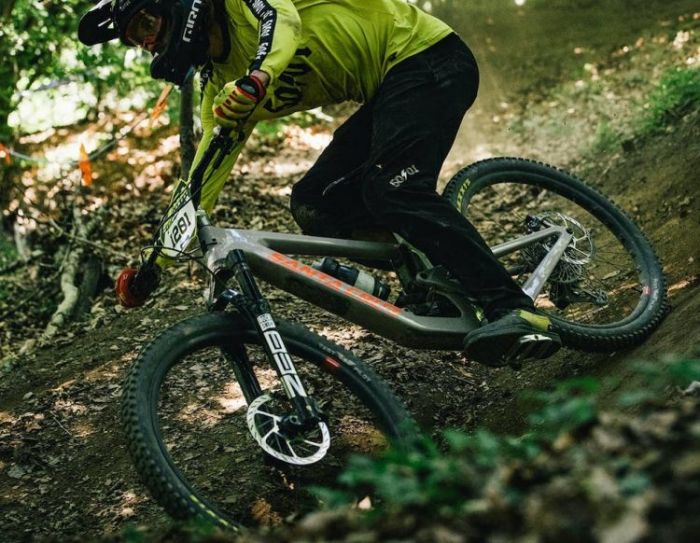Cannondale Jekyll 1
- Price: $6,150
- Front fork: Fox Float Factory 38, 170mm
- Tires: 29 x 2.5″
- Driveline: 1X12
What we like about it: Professional enduro bike with excellent shock system design and idler design, giving you an unprecedented descending experience.
What we don’t like about it: Designed for endurance racing and not for the average city commute.
Rating: (4.8/5)
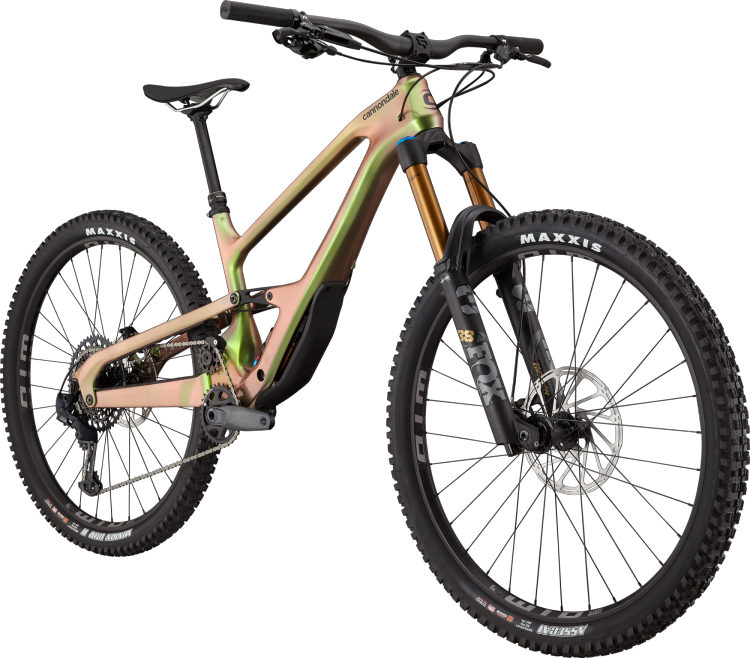
Introduction
The Cannondale Jekyll 1 stands out from the crowd of enduro bikes with its high pivot rear suspension and Guidler design, as well as its unique damping position.
With the high pivot Horst Link suspension design, idler pulleys are utilized to eliminate pedal kickback. So you can keep your pedals smooth even on uneven terrain.
In addition, the carbon frame can effectively reduce the burden of riding. There are also 29×2.50” tires for you to ride on the endurance track.
It’s safe to say that this Cannondale Jekyll 1 is enough to make professional cyclists rave.
Let’s go through its descent, climbing, main features, main components, and other versions in detail next.
If you want to continue to learn more about other related content, welcome to follow us.
Cannondale Jekyll 1 Descending Review
For a professional full-suspension enduro bike, the Cannondale Jekyll 1 is undoubtedly top-notch in terms of descent performance.
My teammates and I put the Cannondale Jekyll 1 through its paces at Angel Fire Bike Park. But unfortunately, we didn’t find a suitable enduro track this time. However, Angel Fire Bike Park has been ranked number one in the Southwest by rider surveys for four years in a row, and it has complex trails and a variety of terrain. So we were able to satisfy our test of the Cannondale Jekyll 1. And I have to say that I was pleasantly surprised by the test.
First of all, in terms of shock effect, it uses Float Factory X2 shocks. I was able to feel the damping experience it brings during the descent. Together with its DownLow dropper post, it further improves the overall stability of the vehicle and effectively reduces the feeling of bumps in the ride.
As I flew through the rugged white woods, the powerful shock-absorbing effect allowed me to control the body steadily. Making all kinds of movements while flying down brought a great sense of security.
Most notable is the GUIDLER design. The clever design that uses idlers to eliminate the high pivot swing arm allows you to keep the pedal smooth even in complex terrain.
Secondly, I have to praise its braking ability. The four-piston SRAM Code RSC brakes have efficient and sensitive braking ability as well as good heat dissipation capability. After a high-intensity descending brake, it still provides powerful and reliable braking.
I leaped from the top of the hill and followed the steep trail, minimizing bumps and weaving nimbly through the driveway as I descended rapidly.
All I can say is that this review has given me more pleasure than ever before.
Cannondale Jekyll 1 Climbing Review
Although the Cannondale Jekyll 1 is mainly focused on endurance racing performance, it is still a great climbing experience.
With the different tire designs of the front Maxxis Assegai, 29 x 2.5″, and the rear Maxxis Minion DHR II, 29 x 2.4″, it can face more complex terrain.
The use of vacuum tires makes the tires less prone to damage while riding, and the EXO+ puncture prevention further protects the tires. At the same time, the tread pattern on the tire surface provides it with enough grip and traction to facilitate your climbing.
And, the Cannondale Jekyll 1 uses the SRAM GX Eagle 12-speed drivetrain, which has excellent shift performance. Meanwhile, its X-sync2 cogs, based on the first generation, have optimized the tooth design to make a better fit to the chain. When riding, you can feel the smoothness between the chain and the gears.
Of course, in the test process, we encountered some more complex climbing terrain, which is slightly worse than some other off-road vehicles in climbing speed. But its overall climbing ability is not weak.
Main Features
Frame
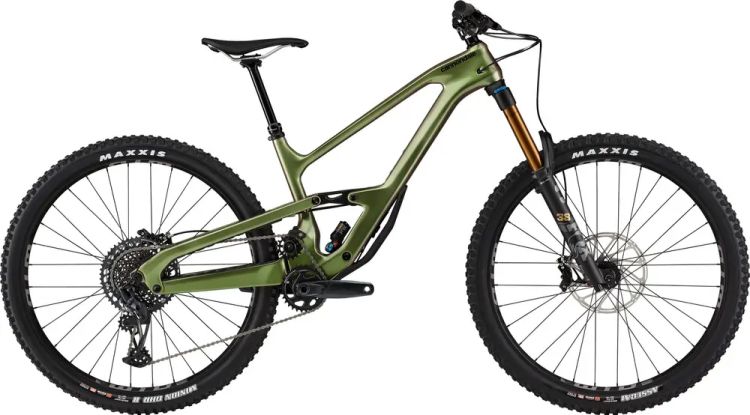
The Cannondale Jekyll 1 has a unique carbon frame that is as light as possible without lacking in strength and toughness. It is specifically designed for high-intensity endurance racing.
It is also covered with a transparent frame protector in some important places and all cables are cleverly arranged inside the frame. So it is very easy to wash the bike.
Moreover, the wide size of the seat and the rear lower fork protection ensure a smooth rear end. Also to protect against the shock, Cannondale has designed a large plastic guard to prevent damage to the shock and the ingress of sludge. It also protects your frame from damage.
Notable for its unique Guidler idler design, the high crank pivot provides a concave and uneven rear axle path. Thus the Guidler pulley eliminates pedal kickback from the high pivot and the 4-link mechanism keeps the braking smooth. This allows for higher traction and further enhances its stability.
Needless to say, the Cannondale Jekyll 1 is relatively homogeneous when it comes to color options, with only two available.
In addition, the Cannondale Jekyll 1 has been designed with a downtube protector. It protects your frame from impacts while allowing water and debris to pass through.
Geometry
As stated earlier, the Cannondale Jekyll 1 is a bike designed specifically for endurance racing, and the same can be said for its geometry. Yes, you can see Cannondale’s racing intentions in its geometry design.
First, the slack steering angle and spring travel reserve ensure a high degree of security. 77.5° steep seat tube angle allows the saddle to be more forward, improving pedaling efficiency.
Also to make descending easier, the Cannondale Jekyll 1 takes a slacker head tube angle (64°). Some may feel that this affects its steering responsiveness. But I didn’t feel it much during my ride.
Components and Specifications
Fox Float Factory Shock Absorbers
For a professional full-suspension bike, a great shock is essential. The Cannondale Jekyll 1 shock includes a FOX 38 Factory GRIP2 fork and a FOX FLOAT X2 Factory rear shock, controlling 170/165 mm of travel respectively. Compared to similar bikes, it has wider travel. This gives it a better ability to absorb vibrations on some gravel roads or rock gardens.
Not only that, but the FOX 38 Factory GRIP2 fork has a stiff chassis. Not only does this not add roughness, but it keeps the fork running smoothly. What’s more, the coilover air springs combine ground-hugging traction with predictable support and allow for full travel when needed. This allows you to ride as hard as you want on rough tracks. And the excellent shock-absorbing effect will allow you to excel in races.
Maxxis Tires
The Cannondale Jekyll 1 is running on Maxxis Assegai, 29 x 2.5″ front, and Maxxis Minion DHR II, 29 x 2.4″ rear vacuum tires.
It is important to know that the design of different types of tires will give Jekyll 1 more ability to face different terrains.
It is worth mentioning that the EXO+ anti-puncture protection is good in some special terrain. The tread pattern on the surface of the tires gives the Jekyll 1 excellent grip, whether it is descending or climbing, it has a good performance.
SRAM Code RSC Hydraulic Discs
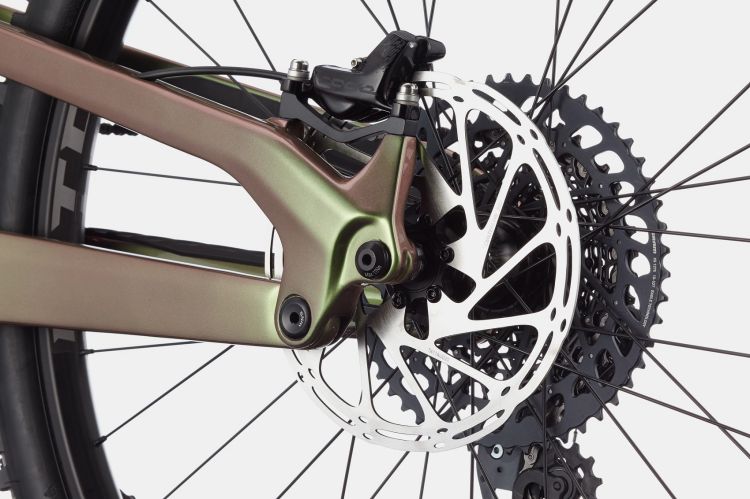
For the brakes, the Cannondale Jekyll 1 chose SRAM Code RSC hydraulic discs. As for me, I choose a bike more for its braking ability.
I have to say that the powerful four-piston SRAM Code RSC hydraulic discs provide a stable and powerful deceleration in terms of braking effect. This gives me the possibility to make more difficult movements.
Moreover, it is 100 grams lighter in weight than its predecessor. Also in the hand you can rest assured that you only need a little bit of force, it will be able to make a sensitive response.
SRAM NX Eagle 12-speed Drivetrain
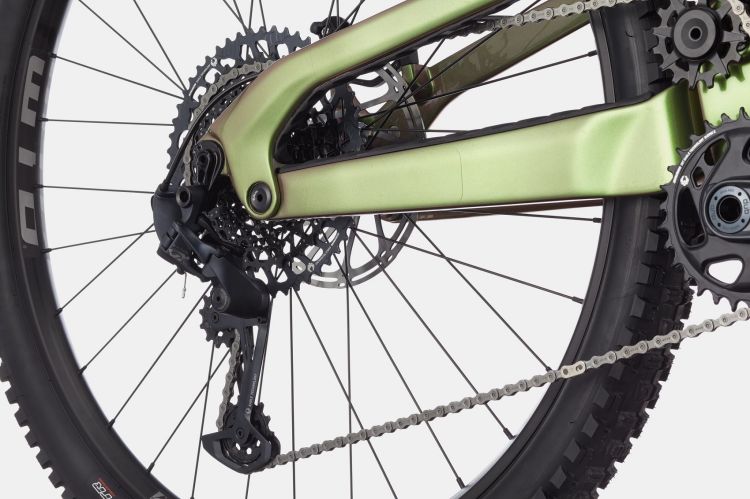
Compared to the other high-end components, the SRAM NX Eagle 12-speed drivetrain is slightly more ordinary. But for endurance racing, the 1×12 drivetrain is still a solid performer.
Maybe you’re used to 2x or even 3x drivetrain shifting. But I’ll tell you that my experience with the SRAM NX Eagle 12-speed is no worse than theirs in real-world riding. And in complex terrain, it always responds quickly, giving you more reaction time.
Other versions of Cannondale Jekyll
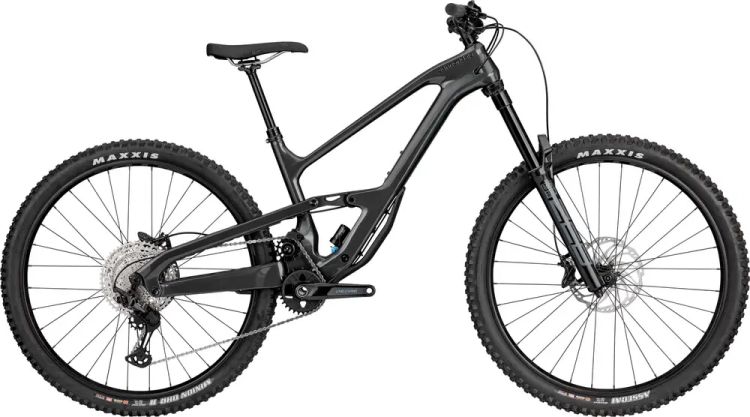
As the Cannondale Jekyll full-suspension enduro bikes are in the same series, these two models are similar in the overall construction.
The difference is that the Groupset used in the Cannondale Jekyll 1 is the GX Eagle, and the extended 520% gear range gives the rider more ability to spin on climbs.
And the open design helps remove mud, providing crisp shifting performance and longer component life. The Cannondale Jekyll 2, on the other hand, uses slightly lesser Deore components.
Also different in the choice of fork, the Fox Factory Float 38 used in the Cannondale Jekyll 1 is better than the RockShox ZEB Select in the Cannondale Jekyll 2 in terms of both performance and material. This is exactly why the Cannondale Jekyll 1 is more expensive. For the professional enduro cyclist, the Cannondale Jekyll 1 will undoubtedly be the better choice.
What we like about it
- High-end, fully shock-absorbing enduro bikes designed for racing.
- The unique carbon frame provides enough strength and toughness while the body is lighter.
- The SRAM GX Eagle 12-speed drivetrain has excellent gear shifting.
- Innovative Guidler design to keep your pedals smooth.
- The Fox Float Factory X2 rear shock allows you to effectively maintain body stability as you descend on the fly.
- Front Maxxis Assegai, 29 x 2.5″ Rear Maxxis Minion DHR II, 29 x 2.4″ vacuum tires let you ride further.
- The SRAM Code RSC hydraulic discs are highly efficient in braking capacity to keep you safe.
What we don’t like about it
- The overly professional configuration results in a price that cannot be afforded.
- Specifically designed for endurance racing and not for commuting.
FAQ
- What is the drivetrain of the Cannondale Jekyll 1?
The drivetrain of the Cannondale Jekyll 1 is the SRAM GX Eagle 12-speed drivetrain.
- What are the brakes on the Cannondale Jekyll 1?
SRAM Code RSC hydraulic discs.
- What are the tires on the Cannondale Jekyll 1?
The tires on the Cannondale Jekyll 1 are the front Maxxis Assegai, 29 x 2.5″, and the rear Maxxis Minion DHR II, 29 x 2.4″.
Size Chart for Cannondale Jekyll 1
| size | Rider height |
| SM | 157 – 166 CM |
| MD | 162 – 176 CM |
| LG | 172 – 183 CM |
| XL | 180 – 186 CM |
Cannondale Jekyll 1 Specs
Build
| Frame | 165mm travel, Carbon, Proportional Response Tuned, Guidler idler pulley/chain guide, BSA 73, ISCG05, tapered head tube, Ai Offset BB Standard: BSA, 73mm, Threaded Colors: Beetle Green; Graphite |
| Fork | Fox Float Factory 38, 170mm, 15x110mm thru-axle, tapered steerer, 44mm offset |
| Rear Shock | Fox Float Factory X2, 205×65 Metric Trunnion, Air, Adjustable High Speed/Low-Speed Compression, High Speed/Low-Speed Rebound |
| Bottom Bracket | SRAM DUB BSA MTB73 |
| Headset | Integrated Sealed Bearing, Tapered |
| Stem | FSA Grid 35, 35mm |
| Handlebar | Cannondale 1 Riser, Carbon, 30mm rise, 8° sweep, 5° rise, 780mm |
| Saddle | Fabric Scoop Shallow Elite, hollow cro-mo rails |
| Seatpost | Cannondale DownLow Dropper w/ Matchmaker lever, 31.6, 125mm (S), 150mm (M), 170mm (L-XL) |
| Pedals | Not included |
| Grips | Cannondale TrailShroom |
Groupset
| Rear Derailleur | SRAM GX Lunar Eagle |
| Front Derailleur | N/A |
| Crank | SRAM X1 Eagle B148 CL55, 30T |
| Shifters | SRAM GX Eagle, 12-speed |
| Cassette | SRAM XG-1275, GX Eagle, 10-52, 12-speed |
| Chain | SRAM NX Eagle, 12-speed |
| Brakes | SRAM Code RSC hydraulic disc, 220/200mm CenterLine rotors |
| Brake Levers | SRAM Code RSC hydraulic disc |
Wheels
| Rims | WTB KOM Trail i30 TCS, 32h, tubeless ready |
| Spokes | DT Swiss Factory J-Bend |
| Front Hub | (F) Formula, 15x110mm thru-axle / (R) SRAM MTH 700, 12x148mm, XD Driver |
| Rear Hub | (F) Formula, 15x110mm thru-axle / (R) SRAM MTH 700, 12x148mm, XD Driver |
| Tires | (F) Maxxis Assegai, 29 x 2.5″, 3C compound, EXO+ puncture protection, tubeless ready, (R) Maxxis Minion DHR II, 29 x 2.4″, EXO+, tubeless ready |
Video
Comparison Table
| Bicycles | Price | Drivetrain | Brakes | Tires | Click view |
| Specialized Stumpjumper EVO Expert RS | $6000 | 1×12 | SRAM Code RS hydraulic disc | 29×2.3″ | Click View |
| Santa Cruz NOMAD R / Carbon C / MX | € 5799 | 1×12 | SRAM G2 RE Hydraulic Disc | Front: 29 x2.5″ Rear: 27.5 “x2.4” | Click View |
| Canyon Spectral 29 CF 9 | €5799 | 1×12 | SRAM Code RSC hydraulic disc | 29x 2.4″ | Click View |
| Scott Genius 910 | €5699 | 1×12 | Shimano XT M8120 4 Piston Disc hydraulic disc | 29x 2.6″ | Click View |
Cannondale Jekyll 1 vs Specialized Stumpjumper EVO Expert RS
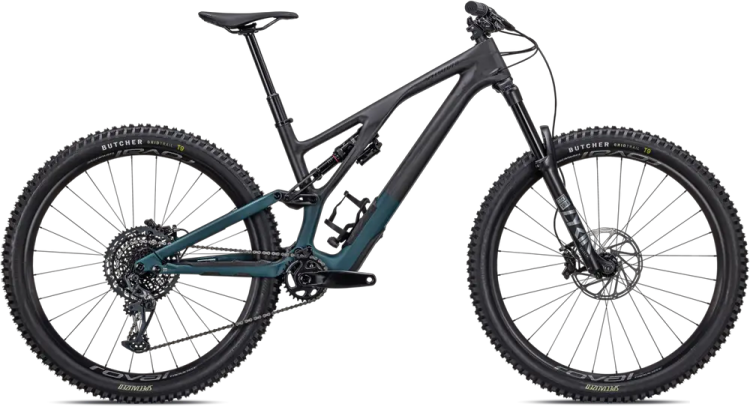
The Specialized Stumpjumper EVO Expert RS, also a high-end component full-suspension enduro bike, is not inferior to the Cannondale Jekyll 1.
But the Jekyll 1 has a wider fork travel than that, which makes the Jekyll 1 even better in terms of shock absorption. Meanwhile, the Cannondale Jekyll 1’s unique Guidler design effectively eliminates pedal rebound from the high pivot system, ensuring you have a smooth pedal stroke. This is something that the Specialized Stumpjumper EVO Expert RS does not have.
If you have more stringent requirements for endurance racing, the Cannondale Jekyll 1 is the right choice for you.
Cannondale Jekyll 1 VS Santa Cruz NOMAD R / Carbon C / MX
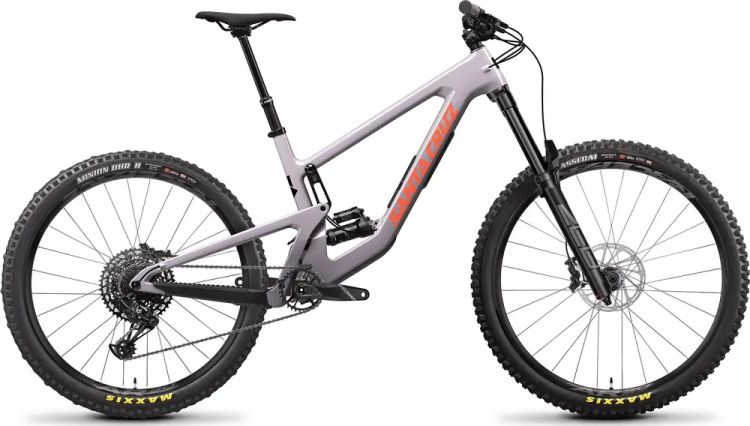
The Santa Cruz Nomad has long been one of the best enduro mountain bikes on the market.
In actual riding, both gave me a similar riding experience. For the Santa Cruz NOMAD R / Carbon C / MX, most people comment that it is fun to ride and has a playful feel to it. And it has an extra carrying case than the Cannondale Jekyll 1, which is very useful for putting some gear inside.
But for me, I prefer the thrill of the Cannondale Jekyll 1 as it flies down a steep, high-crease course. Every part of it is designed to be ready for the drop. And in terms of fork choice, the Jekyll 1 uses high-quality fork parts like the Fox Float Factory 38 for a better damping experience.
Learn more: Santa Cruz NOMAD X01 Review – The Limits Of Man And Bike
Cannondale Jekyll 1 vs Canyon Spectral 29 CF 9
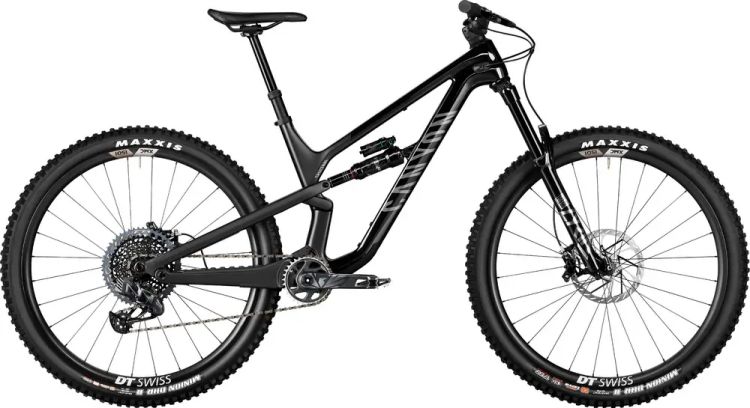
If you look at the price alone, the Canyon Spectral 29 CF 9 is a good choice. With a super high-end RockShox Lyrik Ultimate fork, it also has a great experience in terms of damping.
However, it has less front and rear travel than the Cannondale Jekyll 1. In the actual speed descent process, the damping feeling is still slightly worse than that of Cannondale Jekyll 1.
Also in terms of tire choice, the Cannondale Jekyll 1 has a wider contact area, which provides great stability and is more adaptable to more complex terrain.
learn more: Canyon Spectral 29 CF 7 Review – A Tank-Like, Composed All-Rounder
Cannondale Jekyll 1 vs Scott Genius 910
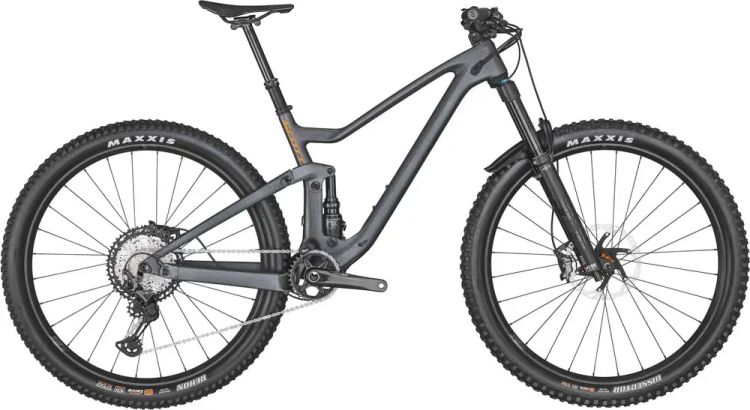
The Scott Genius 910 has a different focus as a mountain bike compared to the Cannondale Jekyll 1.
With the TwinLoc suspension system, the Scott Genius 910 optimizes your ride. . Secondly, the Shimano XT 12-speed drivetrain and Syncros components make the Genius 910 a good experience both in climbing and descending situations. But the Cannondale Jekyll 1 is more of an enduro-oriented bike and is far superior to the Scott Genius 910 in terms of descending experience. If you want to experience a more professional enduro bike, you are welcome to choose the Cannondale Jekyll 1.
In case, the above comments are helpful to you, please remember to share the subscription. Have a great day!

![[Orbea URRUN 10 20mph Review] – Best Used By People Who Enjoy Riding To Get AFeel For The Mountains!](https://bestbikeselect.com/wp-content/uploads/2023/09/2023-Orbea-URRUN-10-20mph-35_-1024x1024.jpg)
![[Specialized Turbo Como 5.0 Review] – Good Choice?](https://bestbikeselect.com/wp-content/uploads/2023/08/2023-Specialized-Turbo-Como-5.01_-1024x1024.webp)
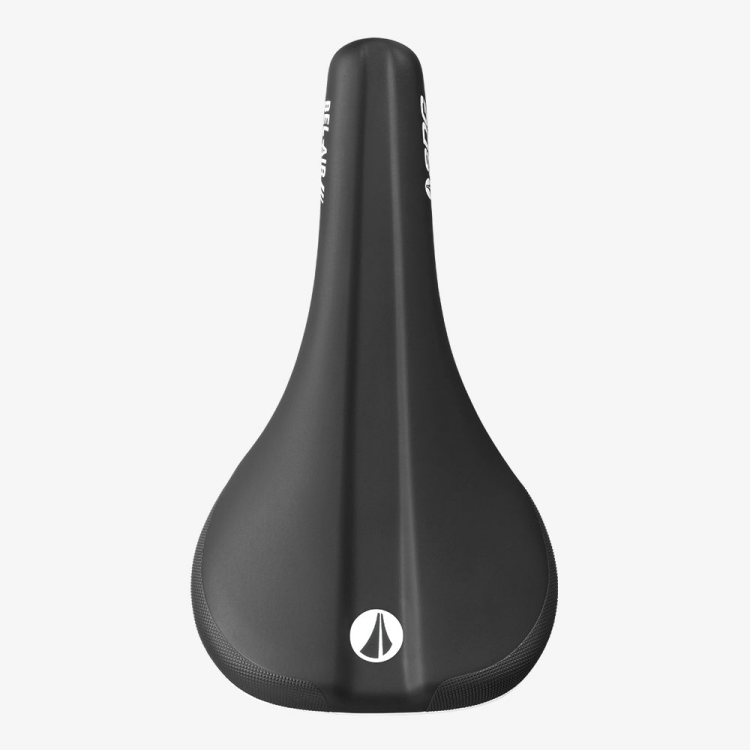
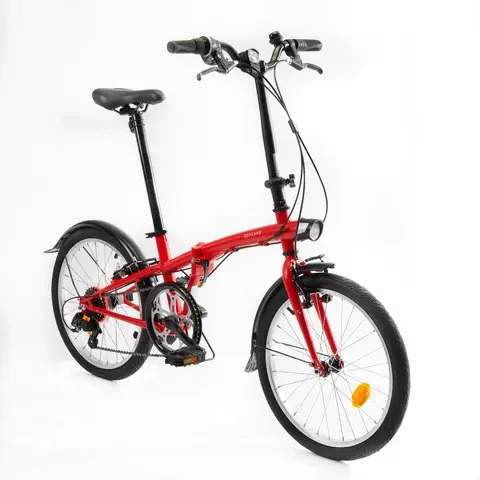
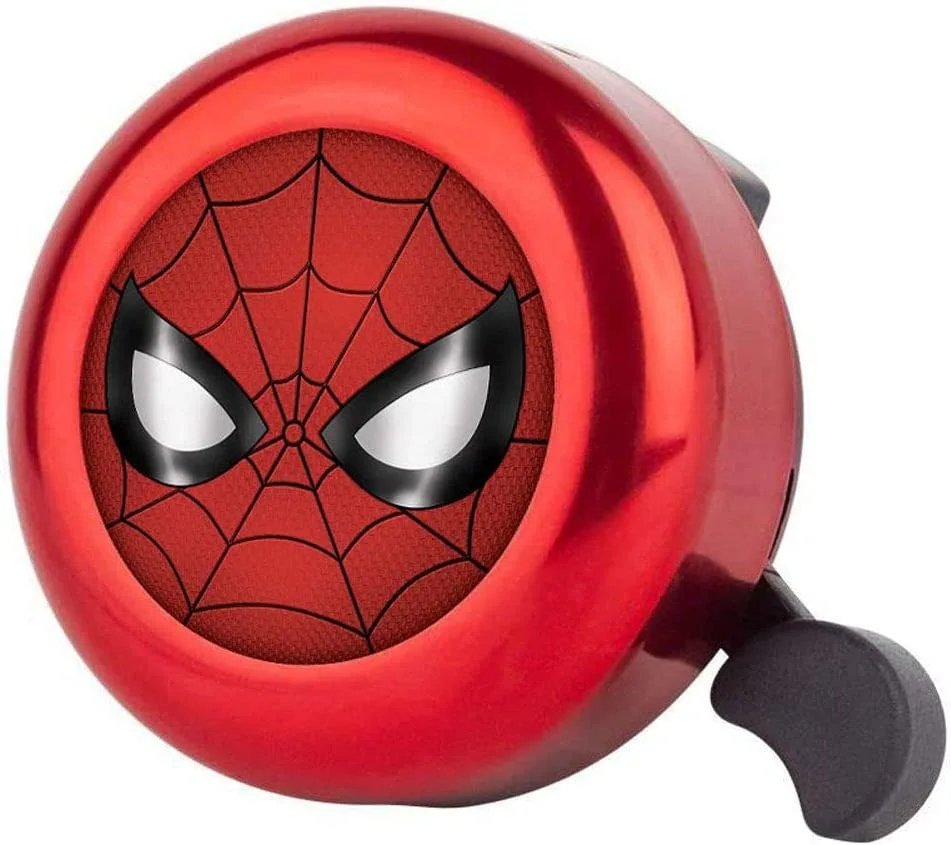
![2025 Built for Champions:[Orbea ORCA M21eTEAM PWR Review]](https://bestbikeselect.com/wp-content/uploads/2025/01/ORCA-M21eTEAM-PWR-1024x885.jpg)
![2025 Conquer Any Trail [Santa Cruz Bronson R Review]](https://bestbikeselect.com/wp-content/uploads/2025/01/Santa-Cruz-Bronson-R-1-1024x768.webp)
![2025 The All-Terrain Beast [Santa Cruz Hightower 3 MY24 Review]](https://bestbikeselect.com/wp-content/uploads/2025/01/Santa-Cruz-Hightower-3-MY24-1024x768.webp)
![The Best Comfortable Leisure Bike of 2025 [ Trek Verve 2 Lowstep Gen 5 ]](https://bestbikeselect.com/wp-content/uploads/2024/12/Verve-2-Lowstep-Gen-5-02-1024x681.png)
![2025’s Top Endurance Bikes [Cannondale Synapse Carbon 3 L Review]](https://bestbikeselect.com/wp-content/uploads/2025/01/Cannondale-Synapse-Carbon-3-L-1-1024x627.webp)
